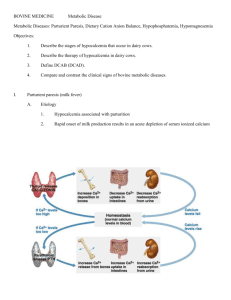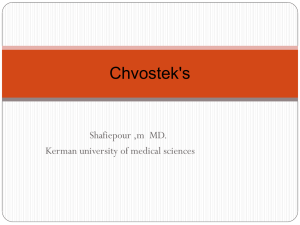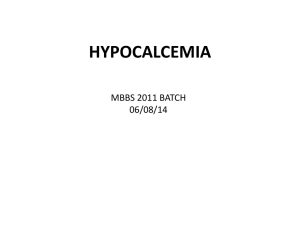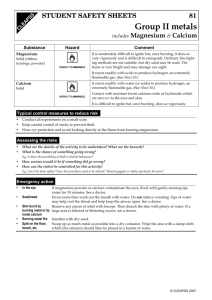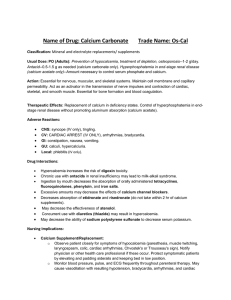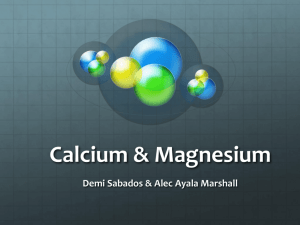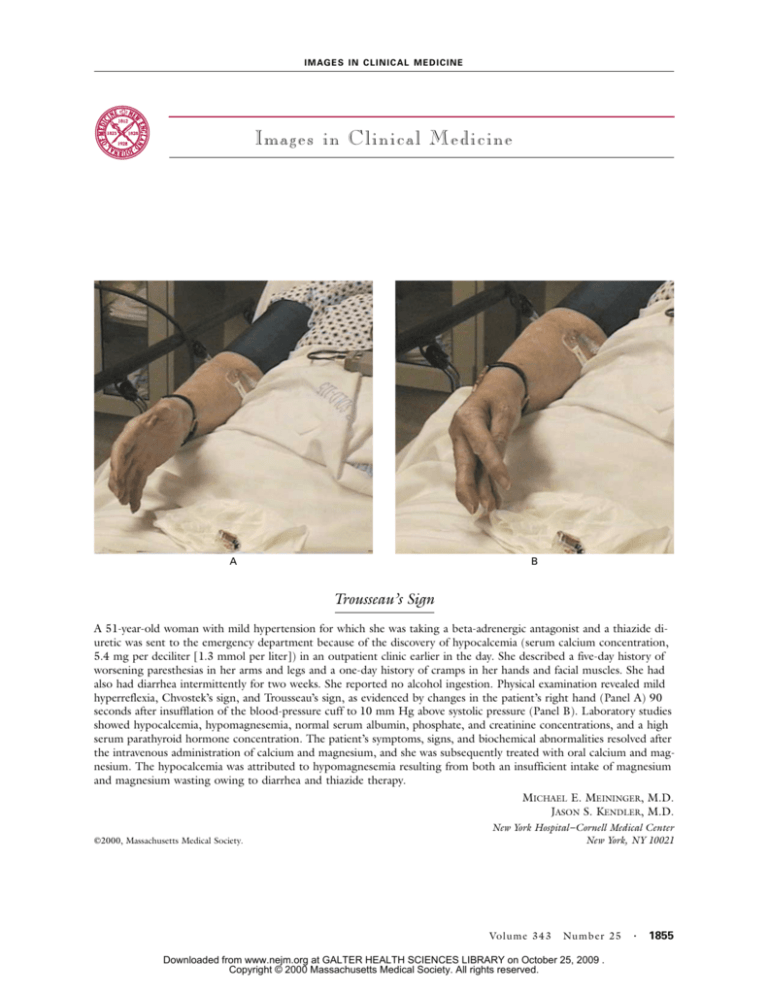
IMAGES IN C LINICA L MED ICINE
Images in Clinical Medicine
A
B
Trousseau’s Sign
A 51-year-old woman with mild hypertension for which she was taking a beta-adrenergic antagonist and a thiazide diuretic was sent to the emergency department because of the discovery of hypocalcemia (serum calcium concentration,
5.4 mg per deciliter [1.3 mmol per liter]) in an outpatient clinic earlier in the day. She described a five-day history of
worsening paresthesias in her arms and legs and a one-day history of cramps in her hands and facial muscles. She had
also had diarrhea intermittently for two weeks. She reported no alcohol ingestion. Physical examination revealed mild
hyperreflexia, Chvostek’s sign, and Trousseau’s sign, as evidenced by changes in the patient’s right hand (Panel A) 90
seconds after insufflation of the blood-pressure cuff to 10 mm Hg above systolic pressure (Panel B). Laboratory studies
showed hypocalcemia, hypomagnesemia, normal serum albumin, phosphate, and creatinine concentrations, and a high
serum parathyroid hormone concentration. The patient’s symptoms, signs, and biochemical abnormalities resolved after
the intravenous administration of calcium and magnesium, and she was subsequently treated with oral calcium and magnesium. The hypocalcemia was attributed to hypomagnesemia resulting from both an insufficient intake of magnesium
and magnesium wasting owing to diarrhea and thiazide therapy.
MICHAEL E. MEININGER, M.D.
JASON S. KENDLER, M.D.
©2000, Massachusetts Medical Society.
New York Hospital–Cornell Medical Center
New York, NY 10021
Vol ume 343
Numb e r 25
Downloaded from www.nejm.org at GALTER HEALTH SCIENCES LIBRARY on October 25, 2009 .
Copyright © 2000 Massachusetts Medical Society. All rights reserved.
·
1855

